Results 21 to 30 of 42
Thread: Scales Experiment.
-
07-19-2020, 09:39 PM #21

@DVW, those look good!
My first HDPE scales mike at .19 inch each, thick but not out of line for a beefy blade in my opinion.
The flex is reasonable and behaves as scales should, no point of looseness noticed as the blade rotates.
My next set will be thinner and I'll report back on those.
@cudarunner Excellent suggestion, I'll probably get an arbor press once I pick up more hours. Covid cutbacks hit hard.
-
07-19-2020, 09:45 PM #22
-
07-19-2020, 11:14 PM #23Senior Member

- Join Date
- Jun 2014
- Location
- Eastern Washington State USA
- Posts
- 406
Thanked: 59
It's not the "looseness" that has me concerned. It is the lack of any "spring" or memory that this martial has. There will not be any tension due to the spring action of the handle material being bent. As you can see below. This stuff bends really easily and can be bent right back to the previous shape without any sign of memory or "set" being taken. I think that even if I get the blade centered in the scales, it won't take but a little side pressure to make it not close on center.
I was thinking the exact same thing. The issue with that is keeping moisture out from between the two materials. Most adhesives will not bond to this stuff.I think some thin brass, G10 etc is in your future
Here they are cut much closer to shape and polished. They look good. Now to make them functional.
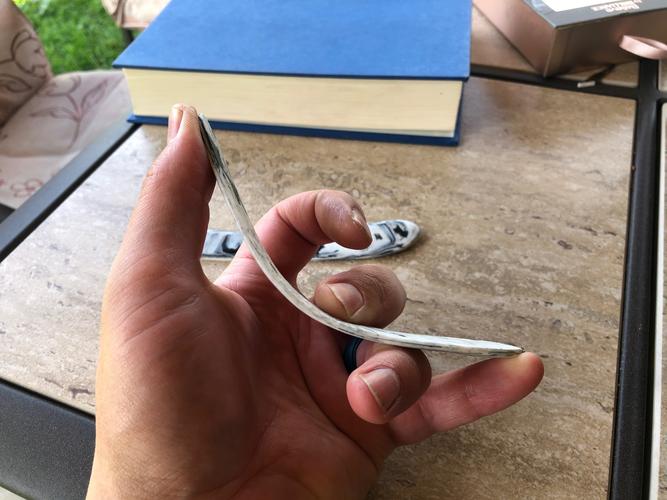
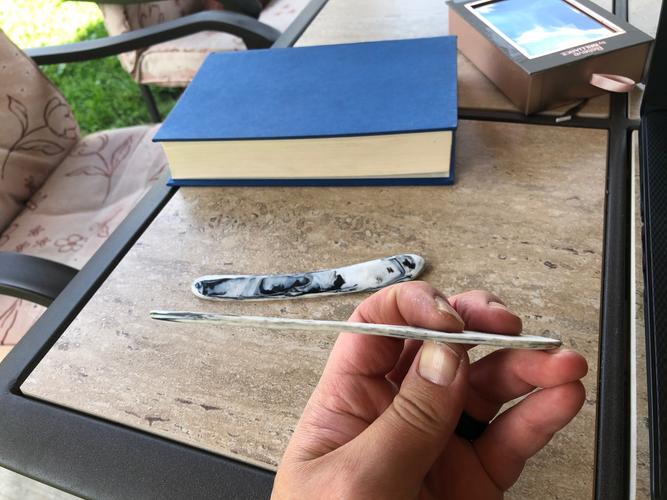
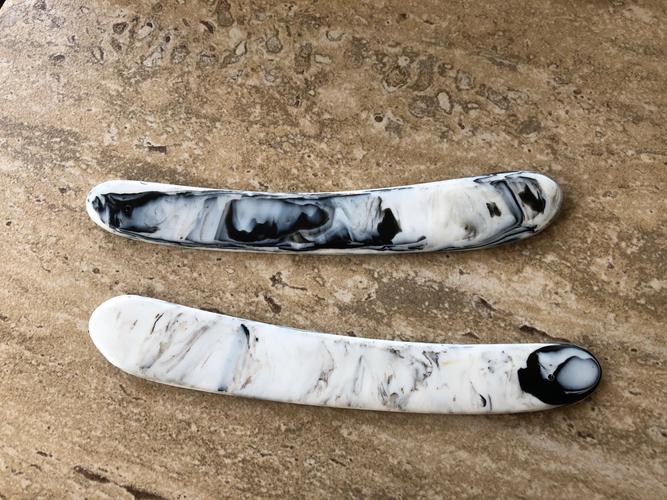
-
07-21-2020, 03:38 AM #24Senior Member

- Join Date
- Jun 2014
- Location
- Eastern Washington State USA
- Posts
- 406
Thanked: 59
Aluminum liners are being laminated to the scales as we speak. I’ll let you know how it turns out.
-
07-21-2020, 01:57 PM #25Senior Member

- Join Date
- Jun 2014
- Location
- Eastern Washington State USA
- Posts
- 406
Thanked: 59
Well that no workie. The idea is sound and it looked as if it may have worked at first, but adhesives just don't bond to HDPE well. This stuff linked below may work for that purpose, but having a special adhesive to use a recycled material is kind of a bummer. I'll keep thinking about it. Another thought is just to use latex caulk since the goal is really just to have a water tight seal between the two materials.
https://www.amazon.com/gp/product/B00EV5DYJY
-
07-21-2020, 05:27 PM #26

No to caulk. You want something that will last decades (ideally) with regular water exposure. Latex caulk will last you several years at best...
-
07-21-2020, 05:31 PM #27

I was thinking perhaps Marine Goop would work

https://www.amazon.com/Amazing-GOOP-...15&sr=8-3&th=1Our house is as Neil left it- an Aladdin’s cave of 'stuff'.
Kim X
-
07-21-2020, 05:44 PM #28Senior Member

- Join Date
- Jun 2014
- Location
- Eastern Washington State USA
- Posts
- 406
Thanked: 59
If I get some time today, I will play with heating up some scrap HDPE sheets and pressing in some cotton fabric or fiberglass mat. Perhaps I can embed something into the plastic that adhesives will also adhere to?
-
07-21-2020, 06:08 PM #29
-
07-24-2020, 10:36 PM #30

Ok, let us call this one a conditional fail.
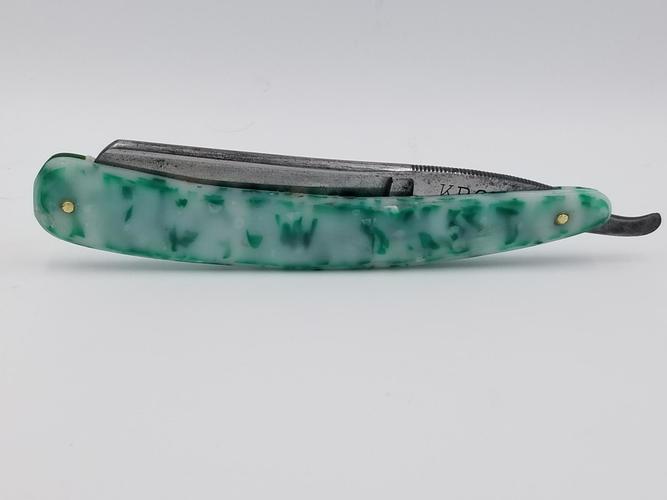
I used the milk jug and green blank and spent a bit of time evening out the two halves on a belt sander due to the flex in my flattening setup. This plastic does not sand well and takes a long time to remove much material. It cut as well as expected on the scroll saw, but did not do well with a drum sander in the drill press. Contouring and shaping with a Dremel sanding drum went well, almost surprisingly.
Now to the hand sanding, again, it takes a lot of effort to remove minimal material. I worked on a slight gouge left from the Dremel 3 times longer than I would have if I used acrylic and finally moved on. I did try light scraping with minimal success but the scraper would often create chatter that didn’t sand out well.
The material did gloss up, but not to a high shine, after a 600 grit 3M abrasive wheel and a cotton buff. After buffing, it had a semi-slick, almost soapy feel to it. I’ll likely knock the gloss off with 500 w/d and hand rub for a satin finish.
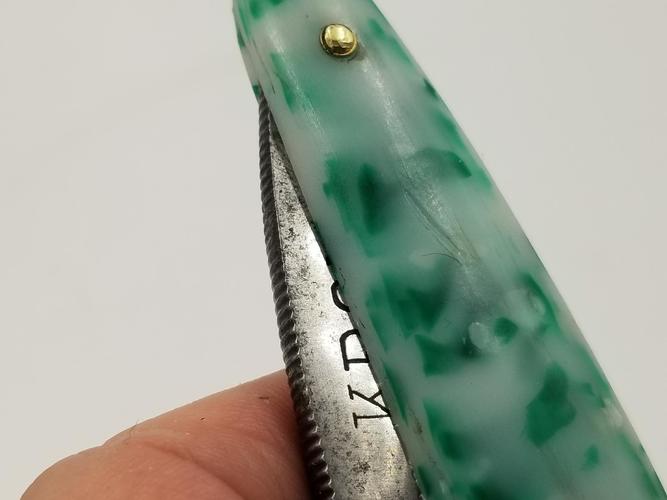
Gouge
Overall, the difficulty sanding was my big issue, and, since it was an experiment, I moved on without a perfectly smooth surface. It pinned up ok and the scales were sufficiently rigid. I did intentionally bend the scales after pinning and it took quite a bit of force to un-center the blade and slightly less force in the opposite direction to recenter it. DVW’s concerns in that matter are valid but at least for this set of scales, not likely to happen under normal circumstances.
I’m shelving the HDPE for awhile, but may revisit in the future, who knows it may work much better injection molded. I’ll give polypropylene (5 PP) a try as soon as I improve my setup.Last edited by joamo; 07-24-2020 at 10:39 PM.
-
The Following 2 Users Say Thank You to joamo For This Useful Post:
32t (07-24-2020), cudarunner (07-24-2020)


 138Likes
138Likes LinkBack URL
LinkBack URL About LinkBacks
About LinkBacks






 Reply With Quote
Reply With Quote




